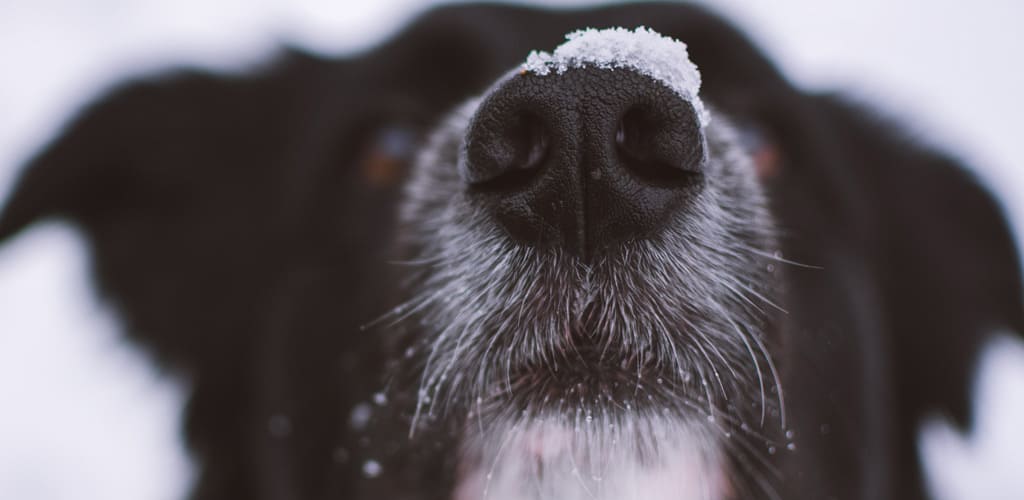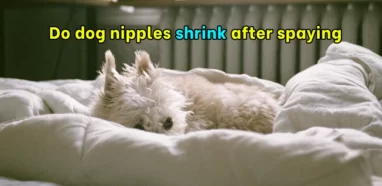Whiskers are specialized hair commonly found on most mammals like rats, walruses, beavers, mice, cats, and so on. This hair is usually longer and thicker and grows from the follicles that produce hairs found on humans and animals and is majorly used by animals as a sensory organ to help navigate their immediate environment.
Whiskers are also found on our friendly canine companions, usually below their chin, upper lip, and the upper region of their eye. Whiskers on dogs can appear in different colors depending on genes, age, lupus, sunlight exposure, and other factors, but they most commonly appear in grey, white and black.

However, in some cases, a dog may have different colored whiskers, which many may find to be strange and may want to know why does my dog have black and white whiskers? This helpful article solved this misery.
Table of Contents
Why does a dog have black and white whiskers?
Normally, your dog should have evenly colored whiskers, but in a situation whereby your dog has differently colored whiskers, there are several reasons for that.
Firstly, your dog’s whiskers may take on the predominant color of the hair growing in the area where they sprouted out. That seems to be the only logical reason why that may have happened. Other causes may include; the aging effect, anxiety and stress, exposure to sunlight, vitiligo, lupus, and so on.
What does it mean when dogs have white whiskers?
The most natural reason why your dog may have white whiskers is that they age. When dogs start to age, their level of melanin production will start to drop, and when this happens, the color of their whiskers will start to change from the original color to grey and then to white. But if your dog is still very young and you are noticing white whiskers, it can be any of the reasons stated earlier.
Are black whiskers normal?
Yes, Black whiskers are normal. Grey, white, and black are the most common colors dog whiskers appear in, so if your dog whiskers are any of these colors, it is normal, and there’s no cause for concern.
Do dog whiskers have a purpose?
Yes, the whiskers you see on dogs are there to serve a particular purpose.
Whiskers on dogs work like the antenna on insects, and they are used by dogs for two major purposes; to aid their vision and to help them navigate their environment. Essentially, they use this sensory organ (whisker) to send messages when sensory cells detect an object or movement.
Why does my dog have a white whisker?
There are several reasons why dogs may have white whiskers, and much has already been said about that. Nonetheless, the possible causes shall be further expanded below.
- Exposure to sunlight
The color of your dog’s whiskers depends largely on their level of melanin, and this melanin can be greatly affected by the sun. Therefore, if you are the type that allows your dog too much free time outdoors (in the sun), then your dog may have more white whiskers.
- Aging effect
As your dog gets older, its ability to produce melanin will gradually reduce, and one of the signs of this aging period is grey and white whiskers. The color of your dog’s whiskers will gradually change from its original color to grey before changing completely to white.
- Vitiligo condition
Vitiligo is a very rare condition that results in the loss of pigments or cells in some areas, which may cause your dog to start growing white whiskers. Some dog breeds that are prone to this condition include; Belgian Tervuren, Rottweilers, Dachshunds, GSDs, and so on.
- Genetics
If your dog has white whiskers, it may be because of hereditary. For instance, if your dog’s mother has white whiskers, then there’s a great chance that your dog might as well grow white whiskers.
- Health condition
The white whiskers on your dog may be that they are suffering from some health complications. Some of the health complications that can lead to white whiskers include; liver disease, kidney disease, and hypothyroidism.
Where are dog whiskers located?
Whiskers are like hairs, but they don’t spread across the whole body length. Instead, they are found on certain areas of dogs’ bodies. Whiskers are commonly found on the upper lips, on the chin, and above the eyes. However, you should know this; their breed largely determines the exact location of whiskers on dogs.
Why do some dogs get whiskers and some don’t get them?
Firstly, you need to know that all dogs have whiskers, and only if your dog is suffering from some severe health issue it may not have whiskers. In fact, all ages of dogs have whiskers. The only logical explanation for the absence of whiskers is that they may be there but very short, hence why you cannot see them.
At what age do dogs have white whiskers?
Age is one of the major causes of white whiskers, so if your dog is getting closer to age 7 or 10 (although this depends on the breed), it may start to grow white whiskers.
Do dog whiskers change color?
Yes, dog whiskers change color. The color of dog whiskers changes as they get older. Normally, the old ones will fall off, and the new ones will sprout out, which may come in different colors. Other conditions that may cause the color of whiskers to change if not age include skin infection or skin follicle trauma.
Is it ok to pluck my dog’s whiskers?
No, it is not ok to pluck your dog’s whiskers. Whiskers are connected to certain nerves in the body, and although they may come off easily when you pluck them, to the dogs, it is usually very painful, and doing so can also cause them to bleed. Although I can’t tell how much plucking their whiskers can affect the sense of their environment, it is not a good idea.
Why does my dog have brown whiskers?
The fur of dogs can influence the color of their whiskers, so if your dog’s fur is brown, your dog may likely grow brown whiskers. Another reason why your dog may grow brown whiskers is their gene.
What happens when you touch dogs’ whiskers?
Whiskers are a very sensitive part of a dog’s body as they are used as receptors for sending information from the environment to the brain. So, if you touch their whiskers, the impact is immediately felt on the body, and they respond instantaneously by blinking or flinching.
Can you cut a dog’s whiskers while grooming?
Yes, you can cut dogs’ whiskers, but it is not advisable. People cut dogs’ whiskers for different reasons: for some, it may be to control their rapid growth or for aesthetic reasons. Whatever your reason may be, cutting your dog’s whiskers is not advisable unless it is only for medical reasons. Cutting their whiskers can lead to confusion or temporary loss of connection with their environment.
Will dogs feel pain when you cut their whiskers?
No, dogs don’t feel it when you cut their whiskers. Dog owners adopt use different methods to cut their canine’s whiskers. Usually, most of these methods are painless, and besides, even though these whiskers are connected to some nerves, they don’t contain pain receptors, so your dog may not feel the pain at all.



